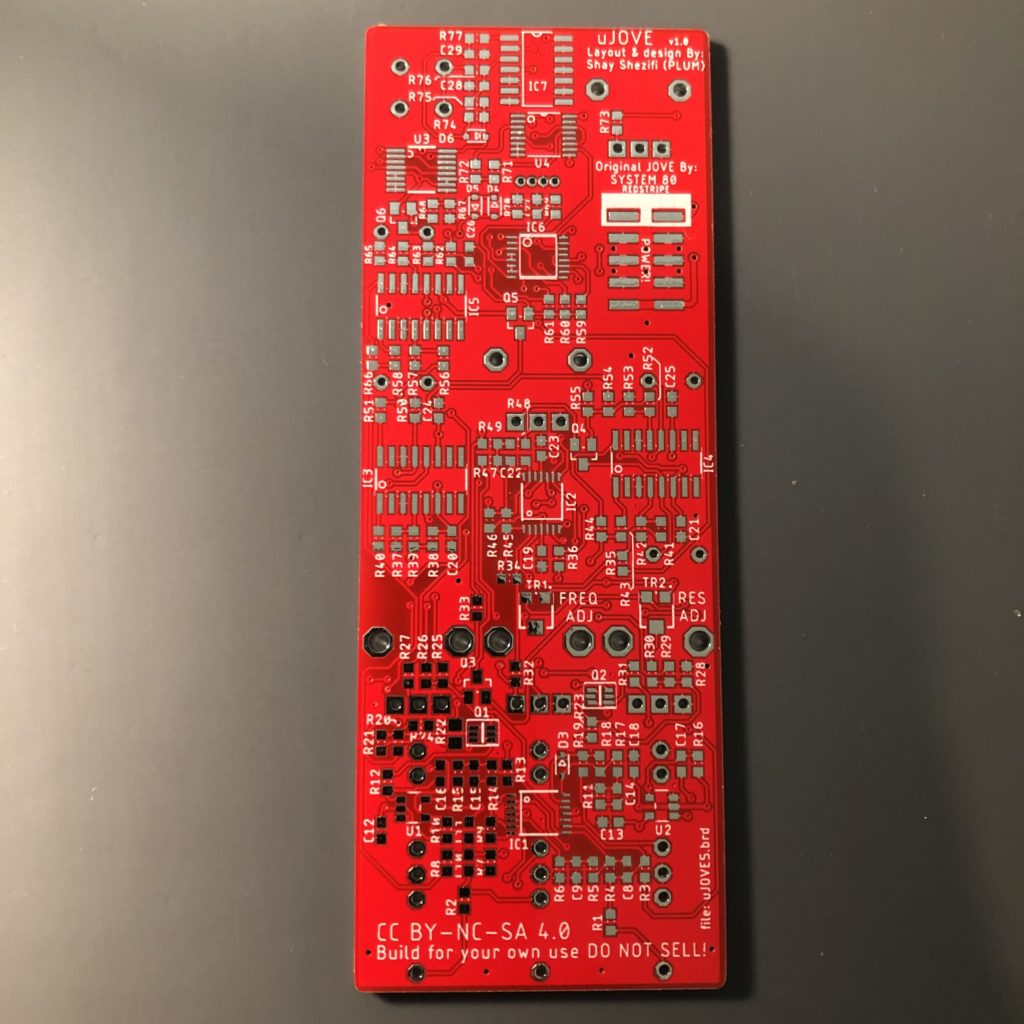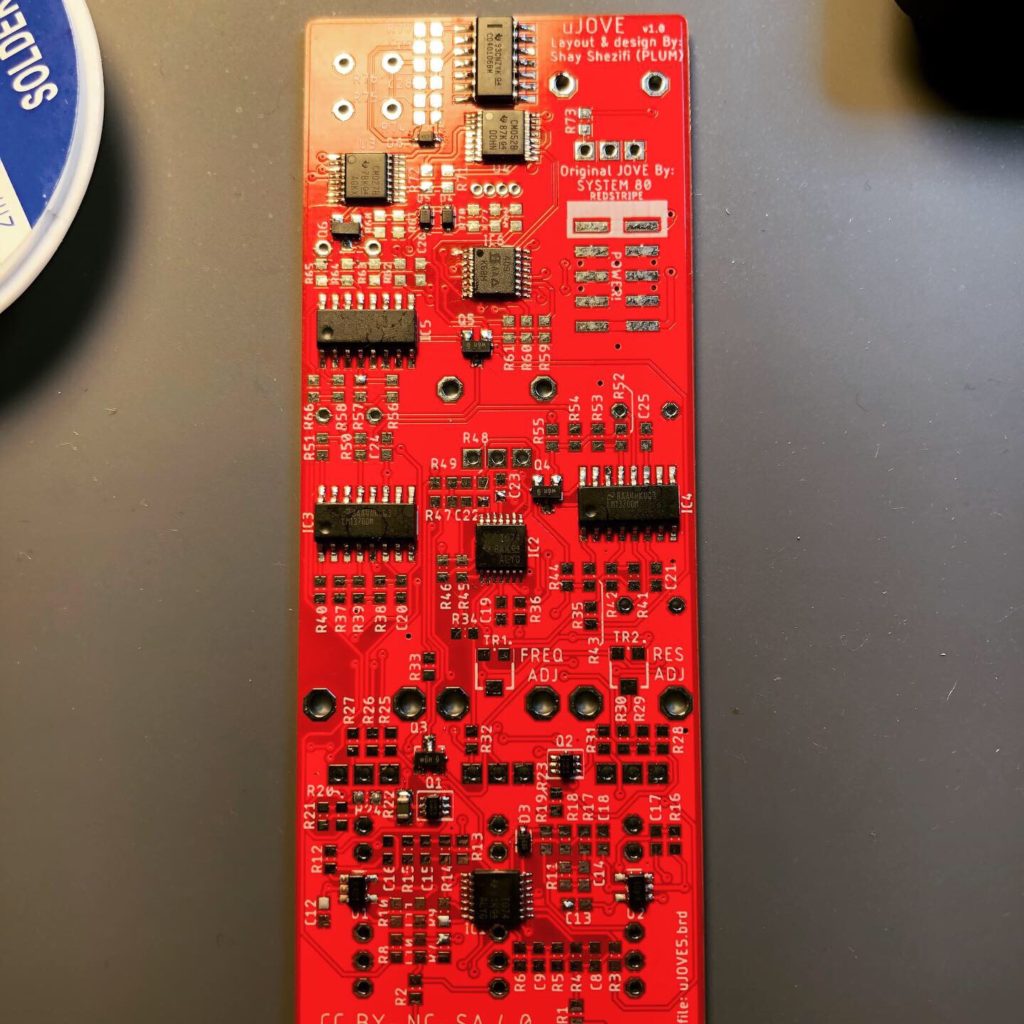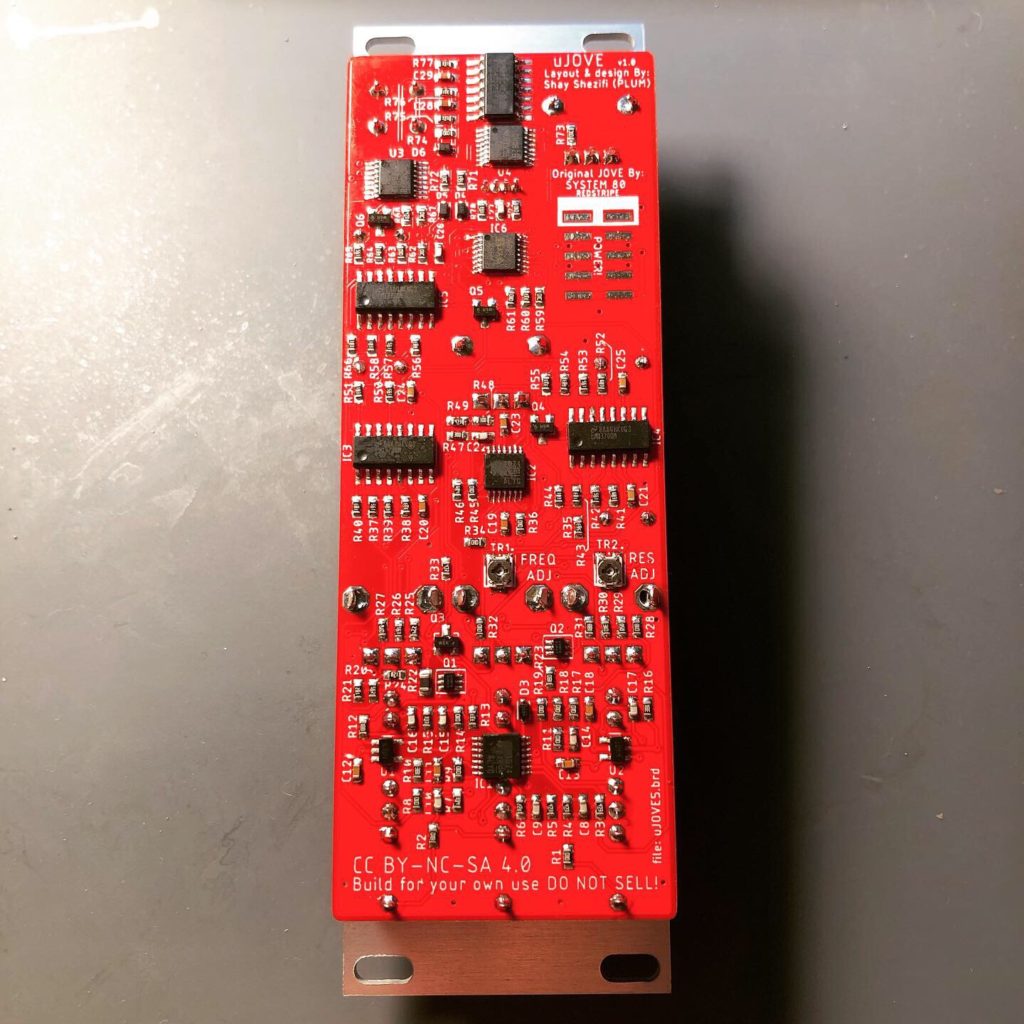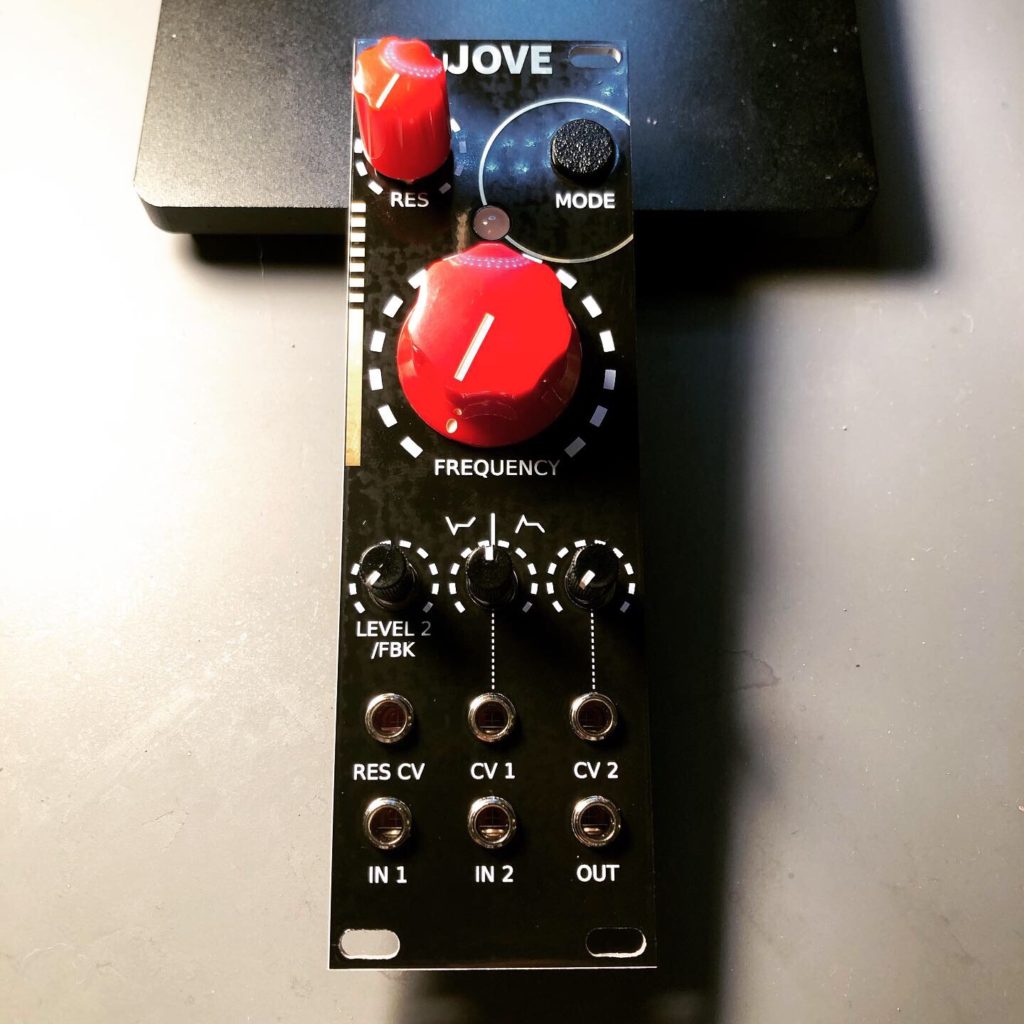Plum Audio uJove
This is a recreation of the Roland Jupiter 6 classic filter in a micro form. The full size Jove module was created by System 80 and available for DIY for no commercial sales. I picked up the PCB and panel from Pusherman’s Store. This is by far the most dense SMD PCB I have ever attempted. I was pretty stressed out at a few moments during the build, but all in all it went well. When I first fired it up I was not getting any audio in but the filter would self-oscillate. I grabbed the schematic from Github and followed the input path and reflows a few things and it fired right up.
This thing sounds great and it’s not even calibrated yet! The next steps are to follow the calibration instructions and get this thing mounted in my rack.




Calibration Notes from Github:
Feed one of the inputs a 10 Vpp ~50 Hz square wave. In 12 dB mode with frequency and resonance knobs both at minimum (fully CCW), adjust VR5 so that the filter is fully closed. This is best done by ear using headphones. Then switch to HP mode with frequency knob at max (fully CW) and listen to ensure most of the high frequency harmonics are gone. There’s a sweet spot where maximum attenuation in both modes can be achieved. The resonance trimmer is used to ensure that there is minimum resonance when the resonance knob is fully CCW. Set the frequency knob at about 12 o’clock and look for a resonance peak on the square wave in 12 dB mode using an oscilloscope. Adjust the input gain so that the output square wave is 10 Vpp. Then use VR7 to to trim away the resonance peak so that the square wave is flat.